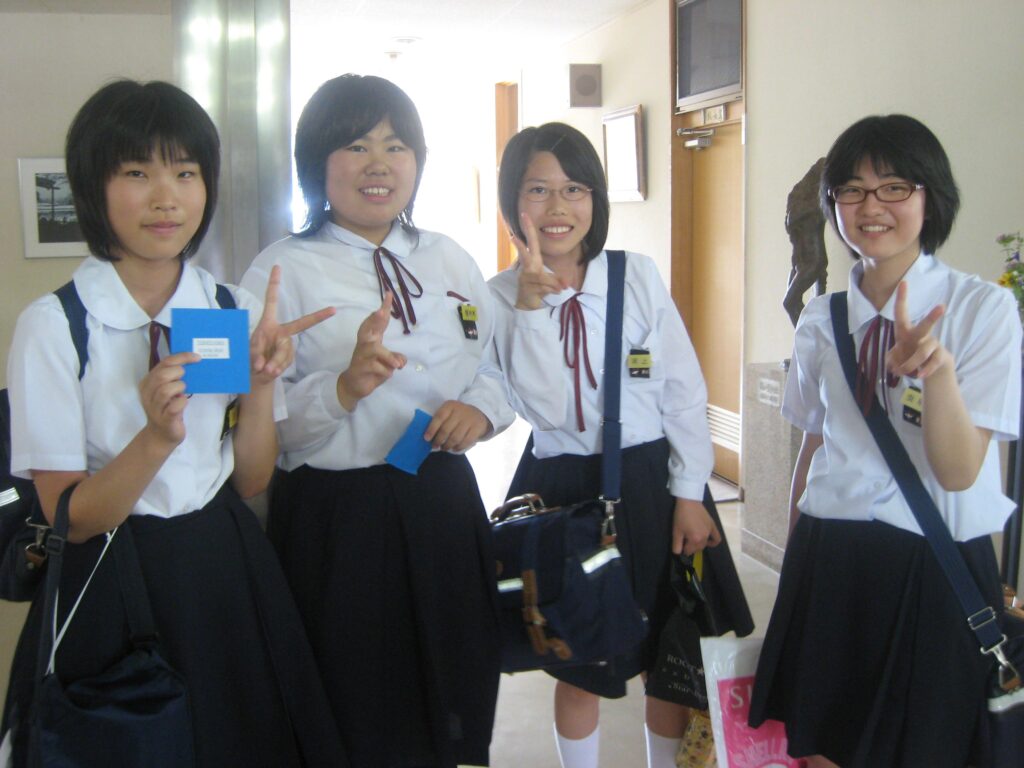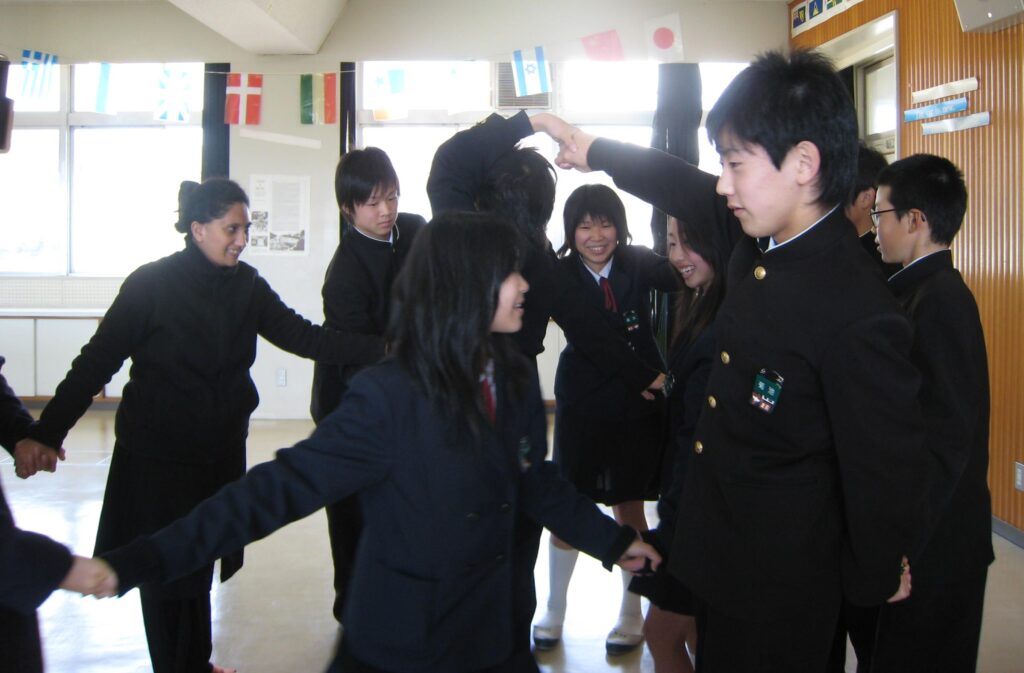So, I started getting used to life in Japan. I was like a sponge trying to grasp everything.

After a few days, we received our gaikokujin tōroku shōmeisho. That is the Alien Registration Card. Aliens ???? Instantly, my hand went on my head, searching for something. Out of concern, my Supervisor asked what happened. With a puzzled look, I answered, looking for “HORNS” She chuckled.
My apartment building was on a mountain called Higashiyama (Higashi= east & Yama = mountain). After that mortifying bike incident, I gave cycling a royal skip for my commute to school and took a tram from the foot of Higashiyama. From there, I took a bus to YJHS.
The Japanese school culture is distinct. The students and staff change into school shoes after entering the academy. The students and teachers jointly clean the school during the break. Every school has a kitchen. Under the supervision of the homeroom teacher, students take the lunch to their classroom, distribute it and take the empty vessels back to the kitchen. Everything is very systematic without any chaos.
One day a Japanese teacher chose the wrong word for the lesson plan. I pointed it out gently and explained the grammar and its usage in the sentence. But it did not convince her. So, I took the back stance.
Next week when I was in the other school helping them with cleaning chores, the phone in the staffroom rang. One of the teachers answered and called me, Aarti Sensei, call for you from the other school. Immediately all the eyes were fixed on me as if asking, what did you do there. I started questioning myself. It was from that English teacher. Although she disapproved of the explanation initially, she found the correct usage. She had no qualms in apologizing and accepting her mistake.
That instance changed the attitude towards me. I had to prove my mettle to be accepted. The teachers and the students started asking me for grammatical doubts and spellings without hesitation. It was the happiest moment when I earned trust and respect as an English teacher. A sense of contentment engulfed me.

I designed school passports for all the students in both schools, just like an actual passport. I chose blue chart paper for TJHS and purple chart paper for YJHS. The first page of the school passport had the name, a photo, and details of the student. The last page had the address of the school. I stuck some blank pages in between to stick the stickers they earned when we played games or activities. It encouraged them to collect more stickers.
The students started taking part in the activities more enthusiastically. Their oral skills improved.
One of the many things I learned from the Japanese teachers was the detailed schedule of the lesson plan for every class.
In TJHS, I designed a treasure hunt game based on grammar and vocabulary. We made a group of 4-5 students. I made lots of chits and hid them in different parts of the classroom. Each chit had a clue for another chit. The treasure was some small Indian gifts. Students were thrilled when they found it. It was valuable as it was their reward that they had earned it.

The students got so involved in the game that we had a tough time toning them down. Tiny beads of sweat started swelling on my forehead. The picture of being reprimanded by the Principal for the noise danced in front of my eyes. I sighed a relief when my imagination dissolved in thin air.
One day in YJHS, a couple of girls came to me to understand a particular grammatical point. I tried to teach using simple English and gestures. After the explanation, I gave them an exercise to check their understanding. They answered all correctly with confidence giving me the correct rules. The glow on the face made me feel that I was doing justice to my job.
I often visited elementary and kindergarten schools. That was a different experience which I’ll share in the next blog.
